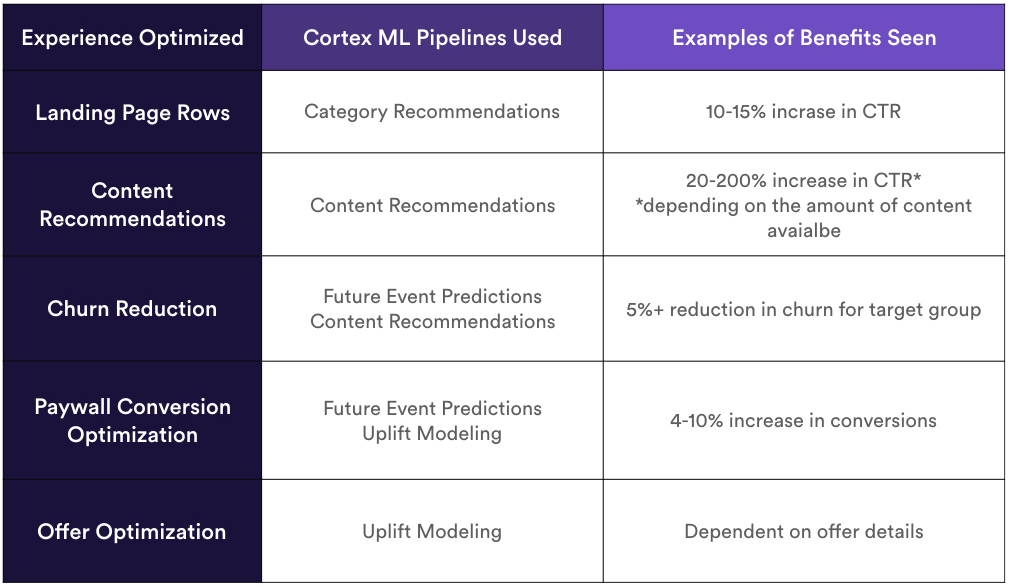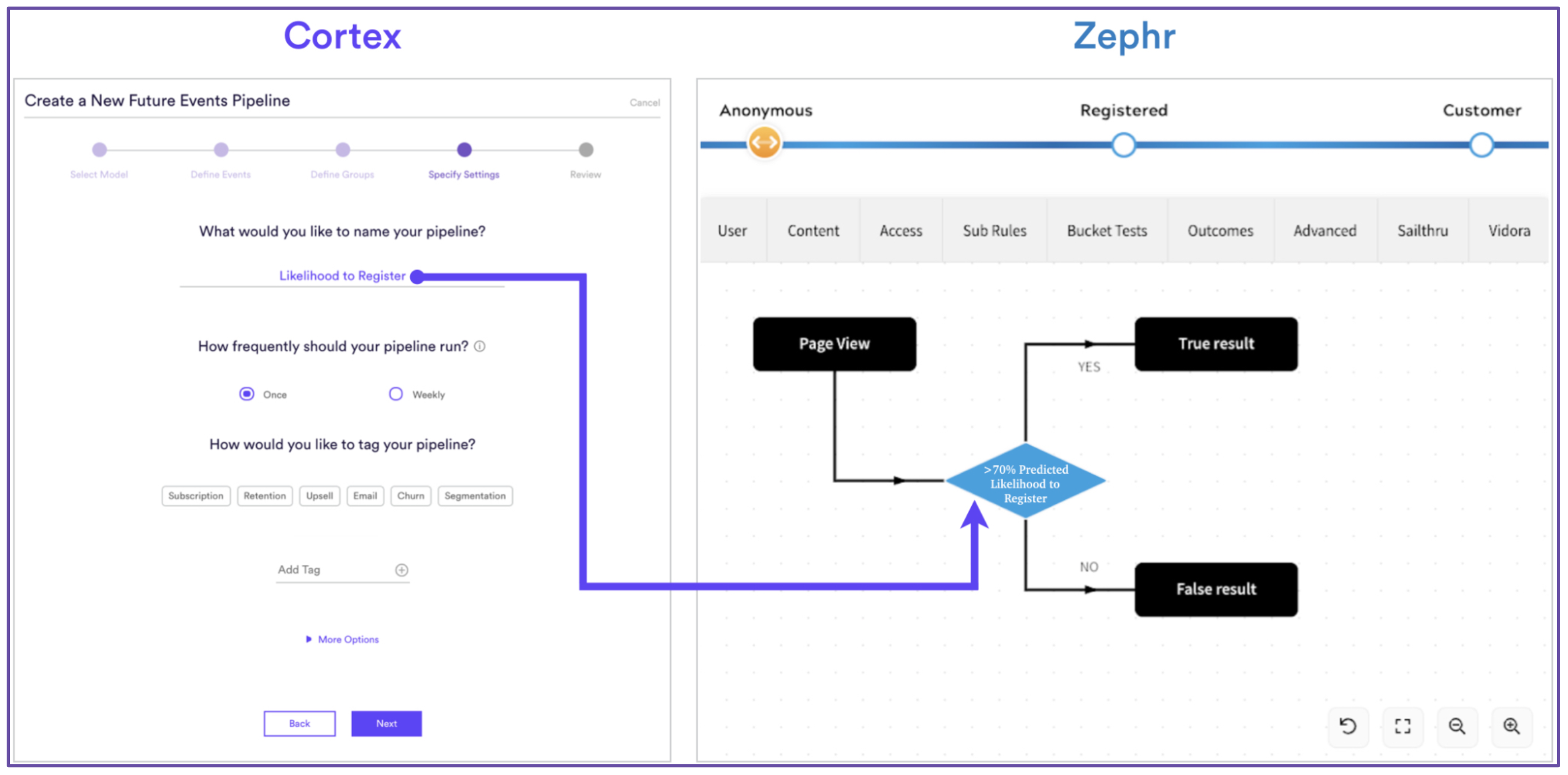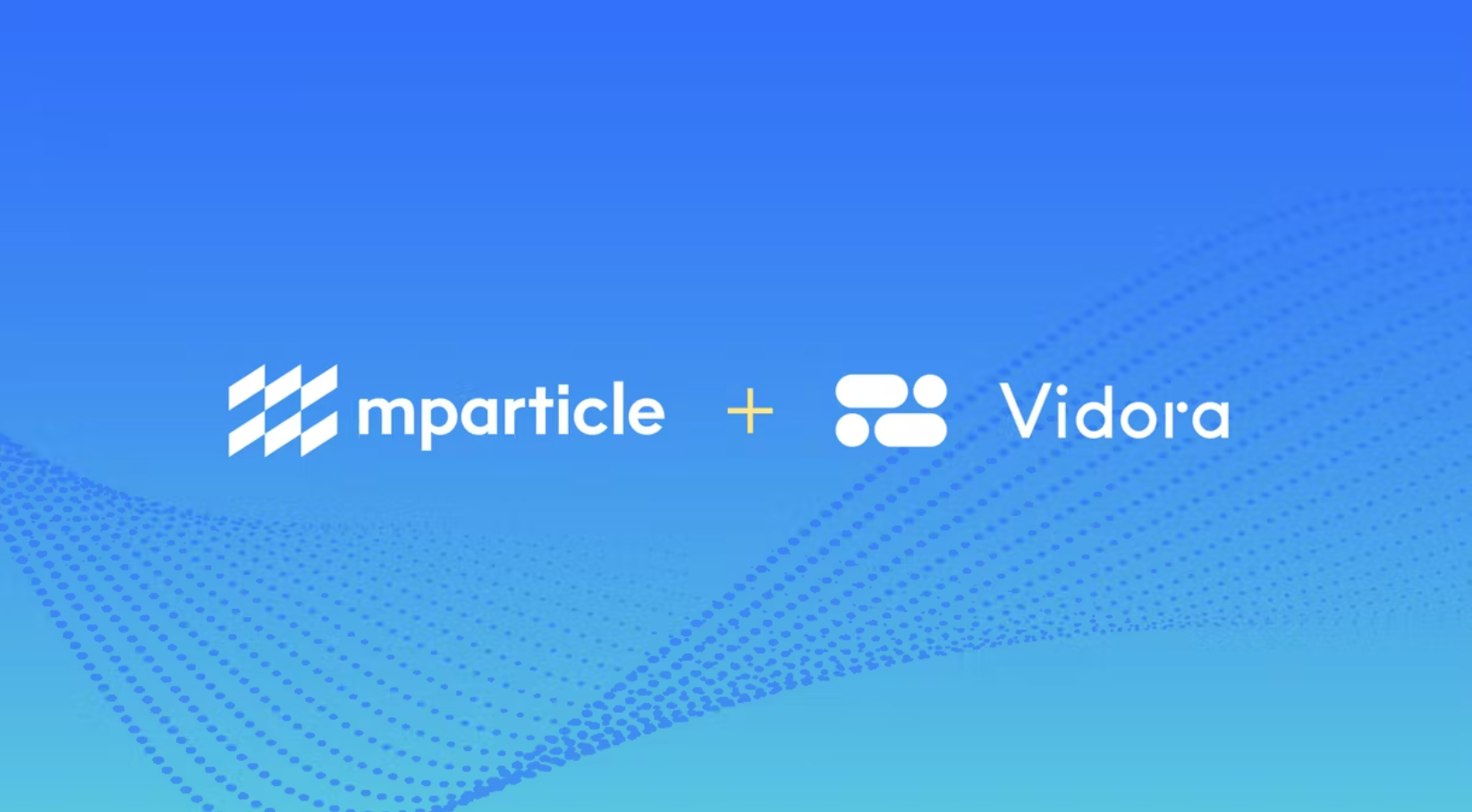
Netflix spends tens of millions of dollars yearly on machine learning. These costs include hiring and recruiting high-priced teams, provisioning large-scale infrastructure, and maintaining a vast ML code-base. Netflix has a big budget for ML.
Not every business does.
With the right platform any business of moderate scale can enable similar functionality to Netflix at a fraction of the cost. At Vidora, we’ve worked with dozens of subscription media sites similar to Netflix deploying predictions, recommendations, prescriptions, and look-alike models. All of these are enabled and operationalized through our no-code machine learning platform Cortex. We’ve learned a lot along the way. We’ve also built a lot of critical features to help our customers recognize value quickly and easily. These include low latency ML APIs, continuously updating models, and data integrations.
In this post I’ll walk through some of the ways machine learning can be used for subscription media companies to enable Netflix-like machine learning technology. In addition, I’ll share some actual results illustrating the gains in revenue, engagement, and retention seen by different businesses deploying Cortex.

Examples of machine learning experiences enabled by Cortex and the commensurate increases in engagement and value. Note that each subscription business is unique and the commensurate machine learning benefits will be unique as well.
Landing Page Rows
Optimizing the landing page is a great way to increase engagement and ensure that subscribers find the content they want every time they enter your app. Lots of businesses provide content recommendations. But few businesses optimize the categories and rows of content available to each user. Landing page rows are easily optimized using Cortex by building a category recommendation ML pipeline (learn more about category recommendations here).


Optimizing the rows of content in the UI can be easily done using a Category Recommendation ML Pipeline in Cortex and can generate a 10% increase in engagements.
Content Recommendations
Content recommendations are likely the first machine learning model deployed by a subscription media service. The more content one has, the more important recommendations are. One learning from our past deployments with premium content providers is that there are a lot of subtleties to think through when considering premium video recommendations. For instance, consider the following nuances –
- how do you treat playing a single episode vs watching the whole series
- how much is a play of a single episode valued by the algorithm when compared to watching the whole series?
How much engagement will you see when deploying content recommendations? The gain in CTR from using recommendations is largely dependent on the amount of content available. In general, the more content available the higher the increase in CTR.

Churn Reduction
Churn is one of the top three metrics reviewed at every subscription media company. It’s the bane of any subscription service. Luckily machine learning provides numerous approaches which help keep churn under control. One method we’ve found to work well with subscription businesses, is to predict the likelihood of a user churning on an ongoing basis and proactively engage users with outbound messaging who reach danger zones.
 Reducing churn using no-code machine learning by assigning a churn probability score to each user using a future events pipeline and engaging those users proactively when they fall into at-risk bins.
Reducing churn using no-code machine learning by assigning a churn probability score to each user using a future events pipeline and engaging those users proactively when they fall into at-risk bins.

Paywall Conversion Optimization
Once you’ve acquired a user, it’s now time to convert them. But not every user is the same. For example, some users will convert best if they receive a free trial for a week, others are ready to be converted immediately. Machine learning can help here too by predicting the right user journey for every user. Future events pipelines and Uplift pipelines are the machine learning tools which provide the best results.


Example of using machine learning to create a dynamic paywall to optimize conversions. This deployment leveraged a Vidora partner, Zephr, also a no-code platform for building user journeys (learn more here about the partnership with Zephr).
Offer Optimization
Offers are a great way to keep users from churning or re-engaging lapsed users. One perennial question for marketers is which users should be targeted with which offer? Some users might respond well to an offer, for some users the offer might be superfluous, and for some the offer makes no difference at all. Uplift modeling enables a marketer to decide exactly which users to target with an offer by predicting the impact of an offer on user behavior.
Beating Netflix at their Own Game
Netflix may have big coffers for machine learning, but that doesn’t mean you can’t deploy the same sophisticated machine learning technology in your own business. The examples in this post are only a small subset of what is possible using no-code machine learning. There are no more excuses for not using machine learning. Let us know how we can help! Email us at partners@vidora.com



